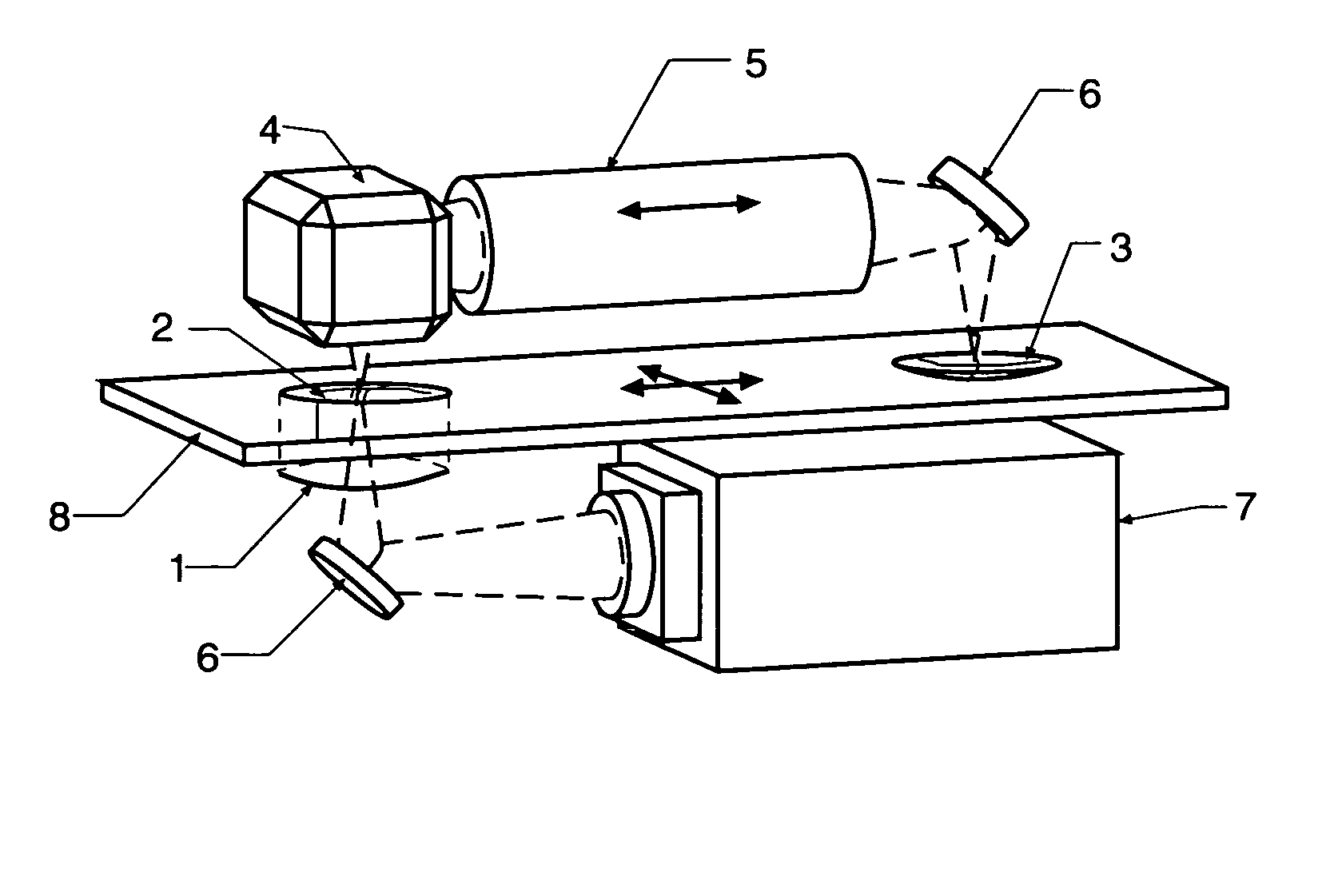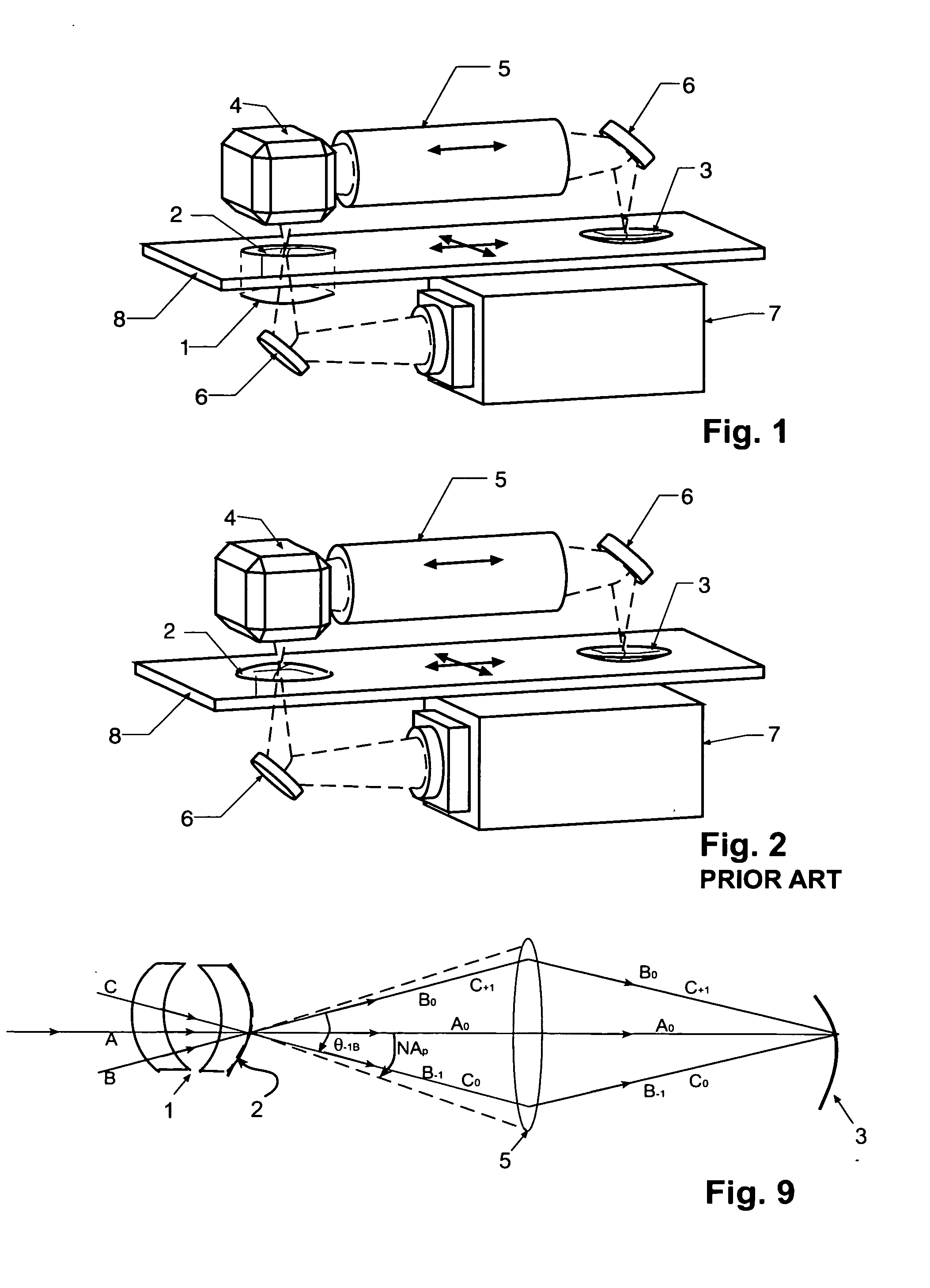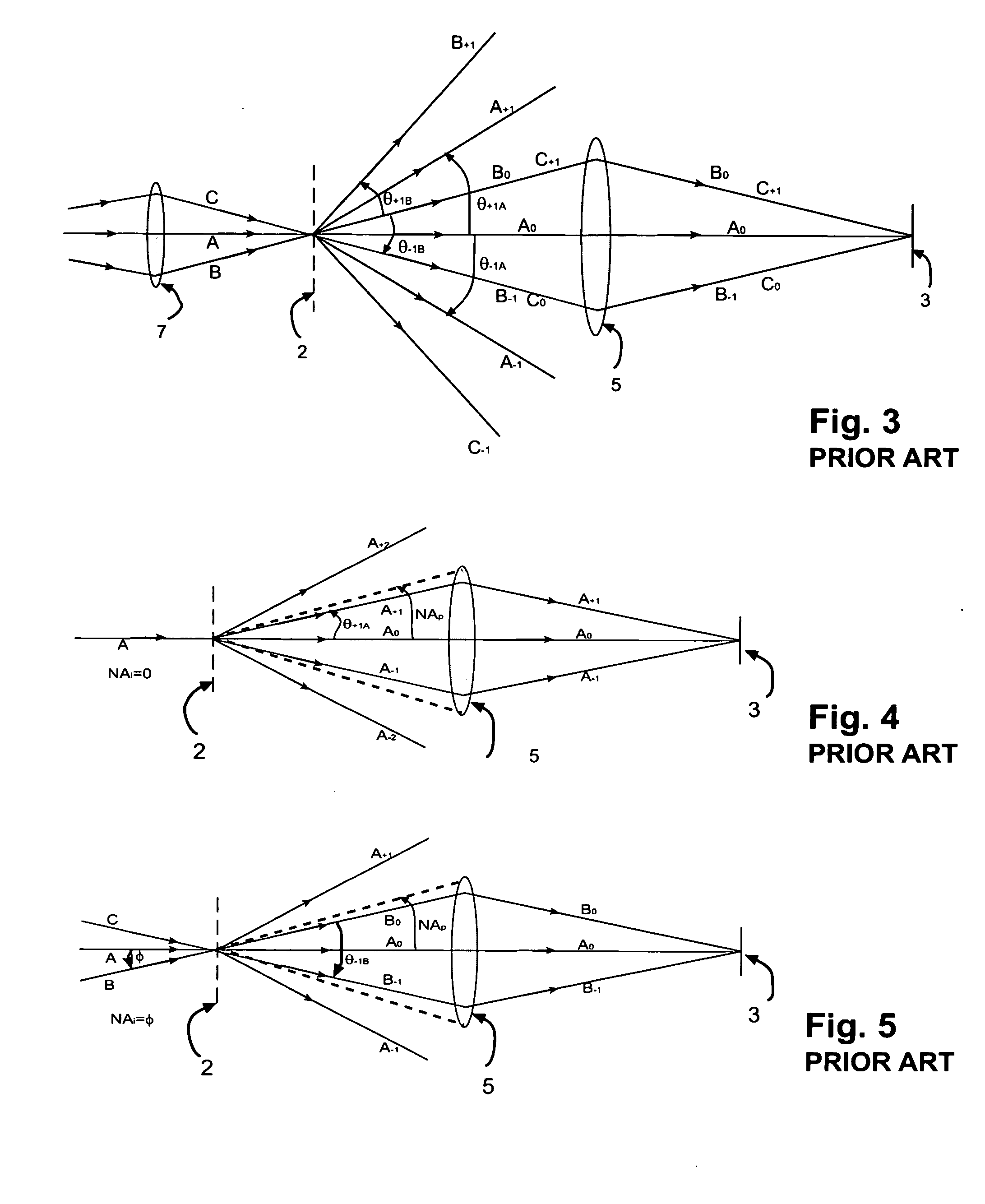Illumination compensator for curved surface lithography
a curved surface, lithography technology, applied in the direction of microlithography exposure apparatus, printers, instruments, etc., can solve the problems of incoherent illumination, lens cannot transmit higher-order frequencies, and the image quality of aerial images begins to suffer, so as to achieve effective coupling
- Summary
- Abstract
- Description
- Claims
- Application Information
AI Technical Summary
Benefits of technology
Problems solved by technology
Method used
Image
Examples
Embodiment Construction
[0026]FIG. 1 and FIG. 2 show the preferred embodiment for patterning onto curved substrates by using a Zerogon lens pair 1, mask 2 having a curvature that is identical to that of the substrate 3 (i.e., the size and shape of the mask 2 and substrate 3 are the same) by additionally performing the imaging using a 1:1 projection imaging system featuring reverser 4, projection lens 5, and fold mirrors 6 as required in directing the patterning beam from illumination source 7 to substrate 3. Stage 8 provides scanning motion. All elements of FIG. 2 (PRIOR ART) are also present in FIG. 1. The difference between the system of FIG. 1 and the PRIOR ART system of FIG. 2 is the presence of the Zerogon in FIG. 1 and the absence of the Zerogon in FIG. 2. The Zerogon in FIG. 1 provides an effective beam coupling between the curved mask and the projection lens.
[0027] We hereby discuss the basis of our invention, initially dealing with planar masks and then with the problems associated with thick cur...
PUM
 Login to View More
Login to View More Abstract
Description
Claims
Application Information
 Login to View More
Login to View More - R&D
- Intellectual Property
- Life Sciences
- Materials
- Tech Scout
- Unparalleled Data Quality
- Higher Quality Content
- 60% Fewer Hallucinations
Browse by: Latest US Patents, China's latest patents, Technical Efficacy Thesaurus, Application Domain, Technology Topic, Popular Technical Reports.
© 2025 PatSnap. All rights reserved.Legal|Privacy policy|Modern Slavery Act Transparency Statement|Sitemap|About US| Contact US: help@patsnap.com



